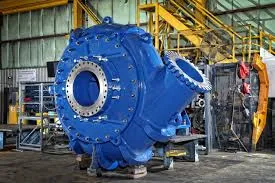Marathi
- Afrikaans
- Albanian
- Amharic
- Arabic
- Armenian
- Azerbaijani
- Basque
- Belarusian
- Bengali
- Bosnian
- Bulgarian
- Catalan
- Cebuano
- Corsican
- Croatian
- Czech
- Danish
- Dutch
- English
- Esperanto
- Estonian
- Finnish
- French
- Frisian
- Galician
- Georgian
- German
- Greek
- Gujarati
- Haitian Creole
- hausa
- hawaiian
- Hebrew
- Hindi
- Miao
- Hungarian
- Icelandic
- igbo
- Indonesian
- irish
- Italian
- Japanese
- Javanese
- Kannada
- kazakh
- Khmer
- Rwandese
- Korean
- Kurdish
- Kyrgyz
- Lao
- Latin
- Latvian
- Lithuanian
- Luxembourgish
- Macedonian
- Malgashi
- Malay
- Malayalam
- Maltese
- Maori
- Marathi
- Mongolian
- Myanmar
- Nepali
- Norwegian
- Norwegian
- Occitan
- Pashto
- Persian
- Polish
- Portuguese
- Punjabi
- Romanian
- Russian
- Samoan
- Scottish Gaelic
- Serbian
- Sesotho
- Shona
- Sindhi
- Sinhala
- Slovak
- Slovenian
- Somali
- Spanish
- Sundanese
- Swahili
- Swedish
- Tagalog
- Tajik
- Tamil
- Tatar
- Telugu
- Thai
- Turkish
- Turkmen
- Ukrainian
- Urdu
- Uighur
- Uzbek
- Vietnamese
- Welsh
- Bantu
- Yiddish
- Yoruba
- Zulu
Telephone: +86 13120555503
Email: frank@cypump.com
डिसेंबर . 13, 2024 19:02 Back to list
slurry pump working principle
The Working Principle of Slurry Pumps
Slurry pumps are essential pieces of equipment used in various industries for transporting slurries—mixtures of solids and liquids. They are predominantly utilized in sectors such as mining, construction, and wastewater management. Understanding the working principle of slurry pumps is crucial for optimizing their performance and ensuring their longevity.
At the heart of a slurry pump's operation is its ability to move abrasive and viscous materials without causing significant wear or damage. The key components of a slurry pump include the pump casing, impeller, shaft, and motor. The pump casing serves as a protective shell, housing the impeller and allowing for the controlled flow of the slurry. The impeller is a rotating device that imparts energy to the slurry, allowing it to move from the inlet to the outlet of the pump.
Working Mechanism
The working principle of a slurry pump begins with the slurry entering through the pump's inlet. As the impeller spins, it creates a centrifugal force that pushes the slurry outwards. This movement is an essential aspect of centrifugal pumps, where the energy imparted to the liquid increases its pressure and velocity. In slurry applications, the solid particles present in the liquid are typically denser than water, making it necessary for the pump design to accommodate the additional challenges of transporting such mixtures.
When selecting a slurry pump, it is vital to consider the type of impeller used. Slurry pumps often utilize open or semi-open impellers to handle the solid particles efficiently. An open impeller has no shroud, allowing for a more extensive range of solid sizes to pass through, minimizing the risk of blockages. Moreover, the impeller's design helps reduce the turbulence created in the slurry, which can potentially lead to wear and tear on the pump components.
slurry pump working principle

Importance of Wear Resistance
Since slurry pumps deal with abrasive materials, wear resistance is a critical feature. Manufacturers often use high-chrome alloys, rubber liners, or ceramic materials for the pump internals to increase durability. These materials can withstand the abrasive forces of the solids being transported, thereby prolonging the lifespan of the pump.
Another notable feature is the ability of slurry pumps to operate at varying speeds and capacities. Depending on the application, the pump may need to handle different flow rates and solid concentrations, requiring flexibility in design. Many modern slurry pumps are equipped with variable frequency drives (VFDs) that allow operators to adjust the motor speed according to the real-time demands of the pumping system.
Performance Factors
The efficiency of a slurry pump is influenced by several factors, including the density and viscosity of the solid-liquid mixture, the size and type of solids, and the overall pump design. Engineers often conduct thorough calculations and utilize advanced modeling to determine the optimal pump size and configuration for specific applications. This ensures that the pump can handle the expected challenges without compromising performance.
In conclusion, the working principle of slurry pumps revolves around their ability to efficiently move mixtures of solids and liquids while minimizing wear and optimizing performance. By understanding the mechanical components, the importance of wear-resistant materials, and the factors influencing performance, operators can select and maintain slurry pumps that meet their operational needs. As industries continue to evolve, advancements in slurry pump technology will further enhance their efficiency and reliability in various applications.
-
High-Performance Air Pumps for Sand & Gravel | Efficient Transport
NewsAug.03,2025
-
ISG Series Vertical Pipeline Pump - Chi Yuan Pumps Co., LTD.|Energy Efficiency, Corrosion Resistance
NewsAug.03,2025
-
ISG Series Pipeline Pump - Chi Yuan Pumps | Energy Efficiency&Compact Design
NewsAug.03,2025
-
ISG Series Vertical Pipeline Pump - Chi Yuan Pumps Co., LTD.|High Efficiency, Low Noise, Durable
NewsAug.02,2025
-
ISG Series Vertical Pipeline Pump - Chi Yuan Pumps | High Efficiency, Low Noise
NewsAug.02,2025
-
ISG Series Vertical Pipeline Pump- Chi Yuan Pumps Co., LTD.|High Efficiency&Compact Design
NewsAug.02,2025










